Traditional French Cassoulet...and what “traditional” means anyway !
The traditional French Cassoulet is probably one of the best known French dishes. Originating from the Languedoc Region, it is essentially a white beans stew with pork and other cuts of meat....
“Easier said than done !”
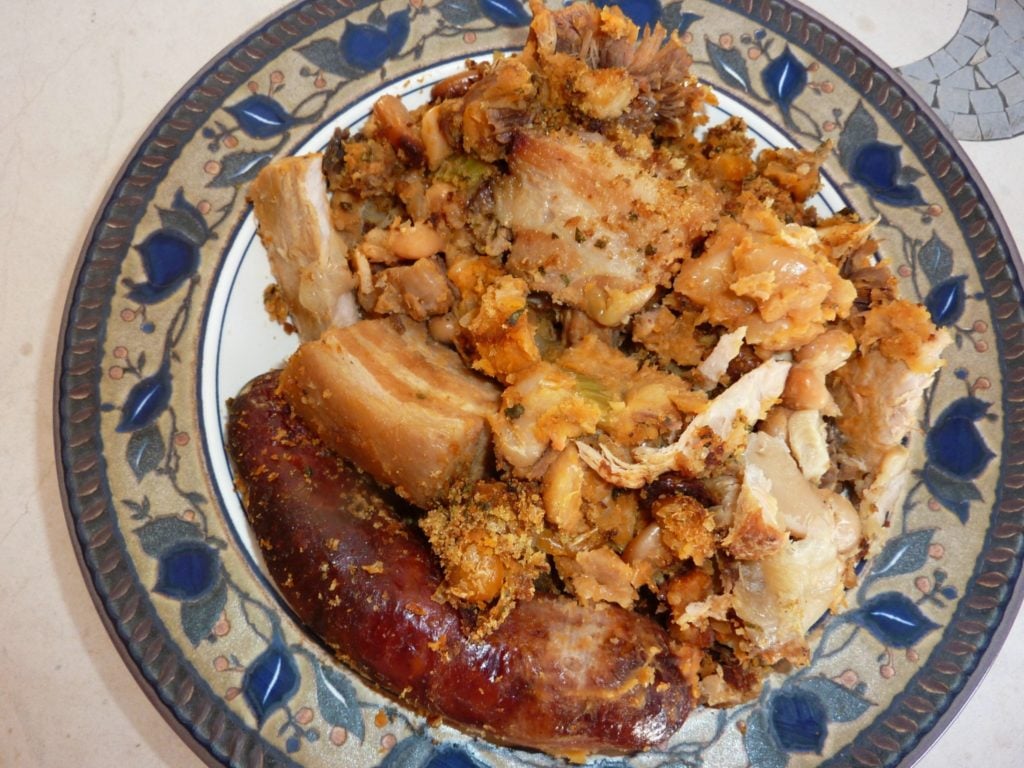
As a “Local” Italian living in France for the past 7 years, I decided it was time for me to conquer the Traditional Cassoulet and cook it at home. To validate my success, I called my friend, foodie and photographer Paul Oatway; an English “local” in France for the past 20 years.
An Italian and an Englishman cooking the Traditional French Cassoulet?
At least we will not be biased by our Traditions.
A Traditional Cassoulet can take various forms. Larousse Gastronomique (amazon affiliate link) identifies 3 types of Cassoulet called the “Trinity”:
The Father: the cassoulet from Castelnaudary
The Son: from Carcassonne
The Holy Ghost: the one from Toulouse
The first one is the oldest and is made mostly using pork: loin, ham, leg, sausage and fresh rinds. The cassoulet from Toulouse is the same as the Castelnaudary, but with less meat and lard. The cassoulet from Carcassonne uses mutton and partridge.... and that is not all. Many more varieties of Cassoulet exist, even ones made with fish!
So in 1966, the Etats généraux de la gastronomie française intervened with a decreed about the definition of Traditional Cassoulet. Whichever meat was used, it should be in the following portions: 30% pork, mutton or preserved goose, 70% beans, and should be flavoured with stock, fresh pork rinds, herbs and vegetables.
Although this is helpful, it still remains rather vague!
The Shopping:
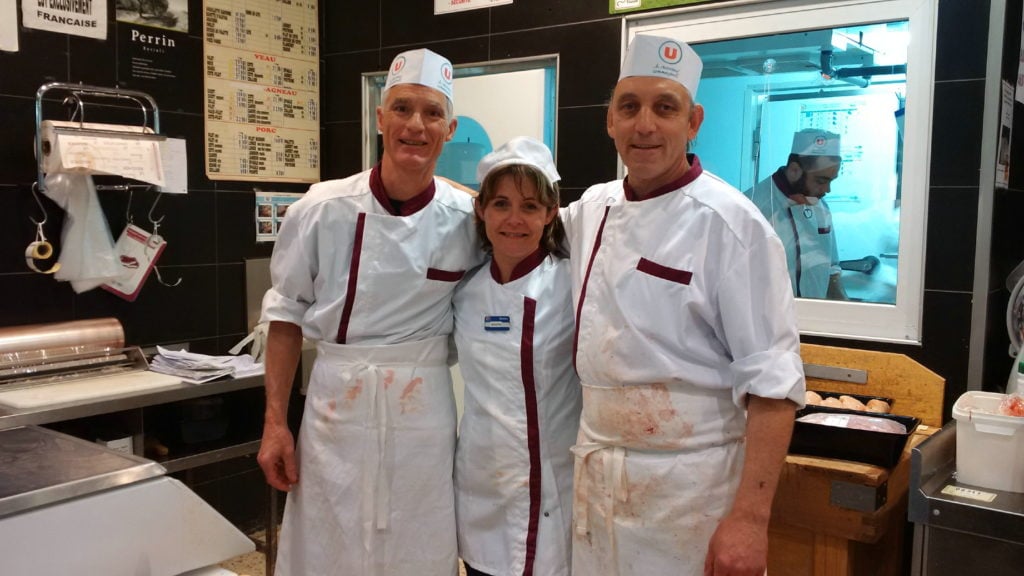
After reading and researching about the Traditional French Cassoulet, I headed to my favourite butchers in La Colle sur Loup to buy all the ingredients: Patrick, Fred and Severne.
As usual, there was a long queue at the butcher stand, and when my turn arrived I asked: “I need the meat to make a Traditional Cassoulet, as you are French and I am Italian, can you please tell me what I should buy?”
Immediately an animated discussion started among the butchers and all the people queuing. Everyone was ready to help with suggestions and recommendations.
The French are very similar to the Italians: we take our food seriously!
Thanks to a lady from Toulouse who was leading the debate, after 30 minutes of lively conversation accentuated by statements, arguments, analysis and conclusions, we finally reached a consensus on how to make the “Traditional Cassoulet”.
Once an agreement was reached, I proceed with my shopping:
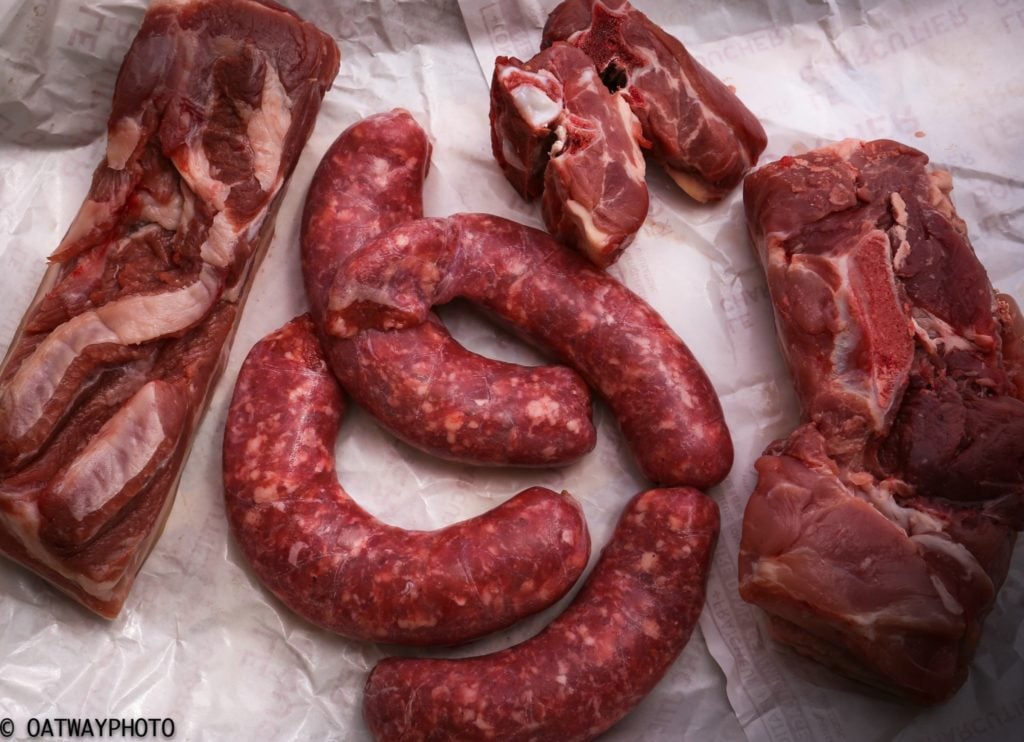
The meat:
- 600 gr of pork shoulder roast with bone (also called picnic shoulder); in French palette de porc
- 600 gr of pork belly; in French poitrine de porc
- 4 Toulouse sausages equivalent of 600 gr
- 1 tin of preserved duck legs; confit de canard
- 2 cuts of lamb shoulder (NB: optional)
NB: As I like the flavour of lamb, and officially mouton is one of the meats used for the Cassoulet in Carcassonne, I also bought 2 cuts of lamb shoulder to make a stock. Though lamb was not named by my fellow shoppers as a cut of meat required for the “Traditional Cassoulet”, and since I did not want to offend anybody, I bought it on the pretence that I needed it for something else. Luckily nobody noticed it, and Fred with a nod of approval served me the lamb without making any comments.
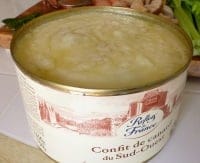
From the garden and pantry:
- 2 bay leaves
- 1 bunch of thyme
- olive oil (Traditionally duck fat is used instead, but as my doctor might be reading this she told me to watch my cholesterol)
- salt and pepper grains
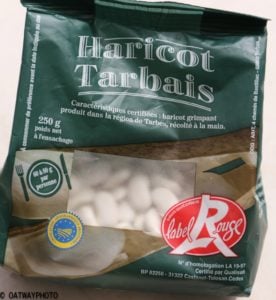
The beans:
750 gr of Haricot Tarbais - unanimous consensus: no other white beans should be used, EVER!
The vegetables and the herbs:
- 2 onions
- 1 stalk of celery
- 2 carrots
- 1 garlic head
- 1 bunch of parsley
- 200 gr of bread crumbs
- 1 leek
- 1 small tin of concentrated tomato paste (fundamental to “Traditional Cassoulet”)
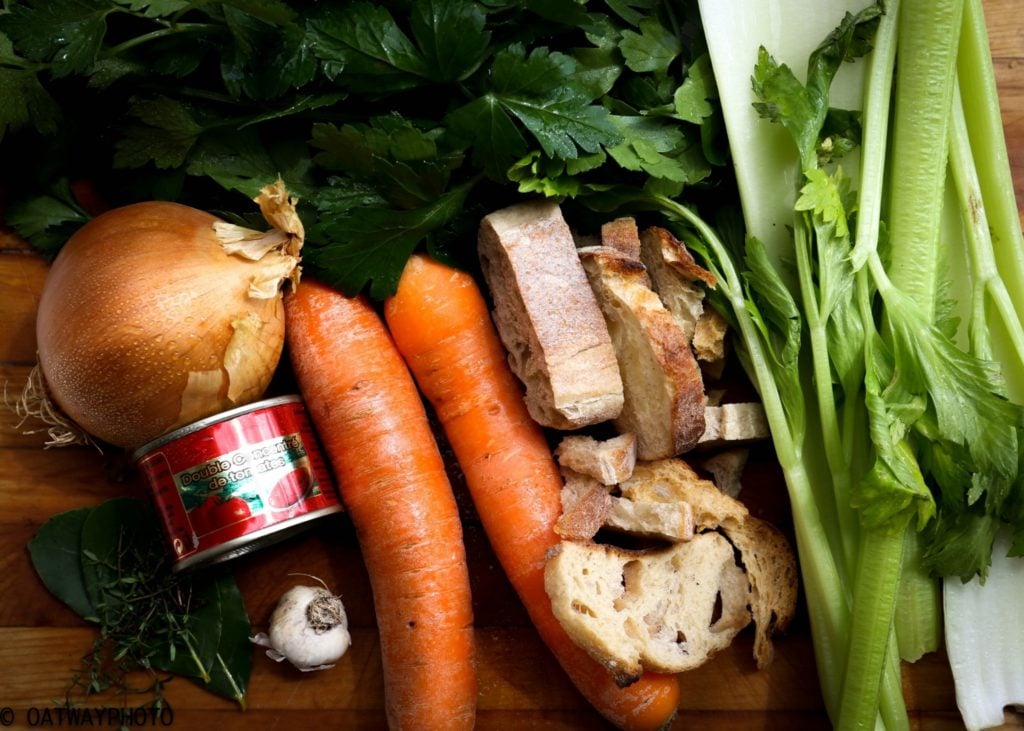
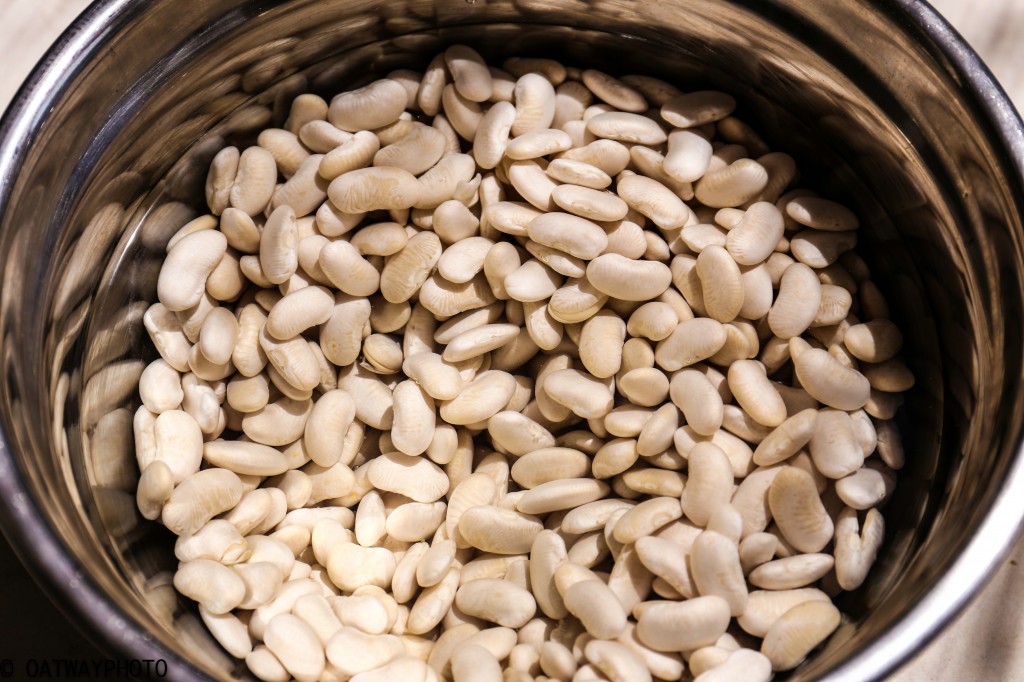
The cooking
To cook a traditional French Cassoulet you need 2 to 3 days of preparation. The beans need to soak in water overnight, so I had all my ingredients ready from day 1.
Day 2 Paul arrives to help, witness and photograph the entire processes.
Step 1
First, all meat should cook separately, so we started by searing the pork shoulder with olive oil, salt and pepper and cook it in a hot oven for 30 minutes. At the same time, but in a separate pan, we also cooked the Toulouse sausages.
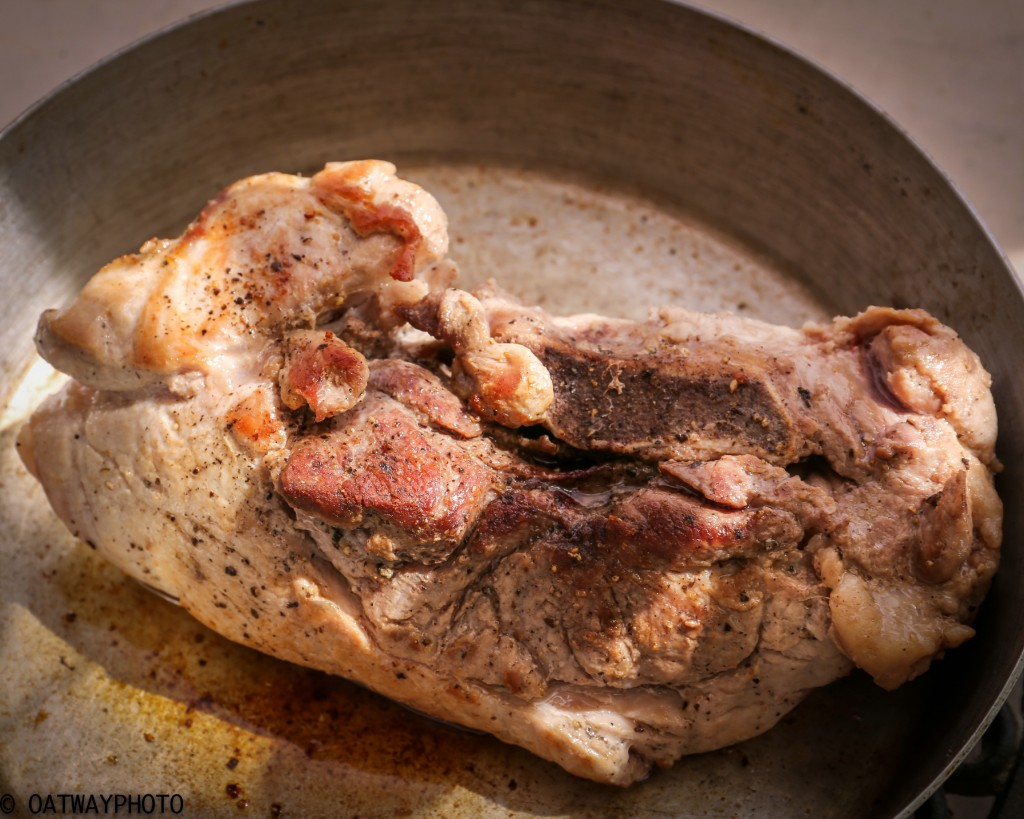
Step 2
We chopped all the vegetables and prepared 2 bouquet garni using a leek leaf wrapped around a bay leaf and some thyme.

Step 3
In one pot I seared the two pieces of lamb and stir-fried some of the vegetables with olive oil. I then added 2 lt of water, 1 bouquet grani, 1 tablespoon of salt and 4 pepper grains to make a stock. If you also decide to use a lamb stock, make sure the lamb has the bones as they add a lot of flavour and texture. I boiled it for 1 hour.
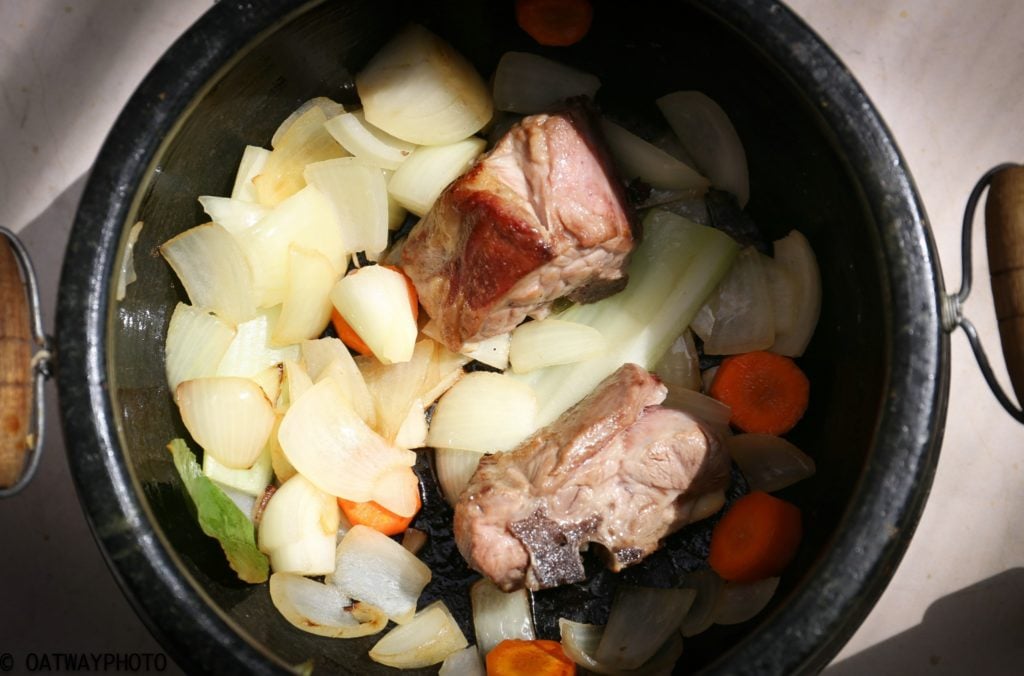
Step 4
In a casserole I seared the pork belly, stir fry the rest of the vegetables and deglaze with the tomatoes paste. I add the beans, cover them with water and added 4 garlic cloves, 1 tablespoon of salt, 4 pepper grains and the second bouquet grani. I cooked it for 45 minutes. If you want to speed up the process you can cook it in a pressure pan for about 10 minutes.
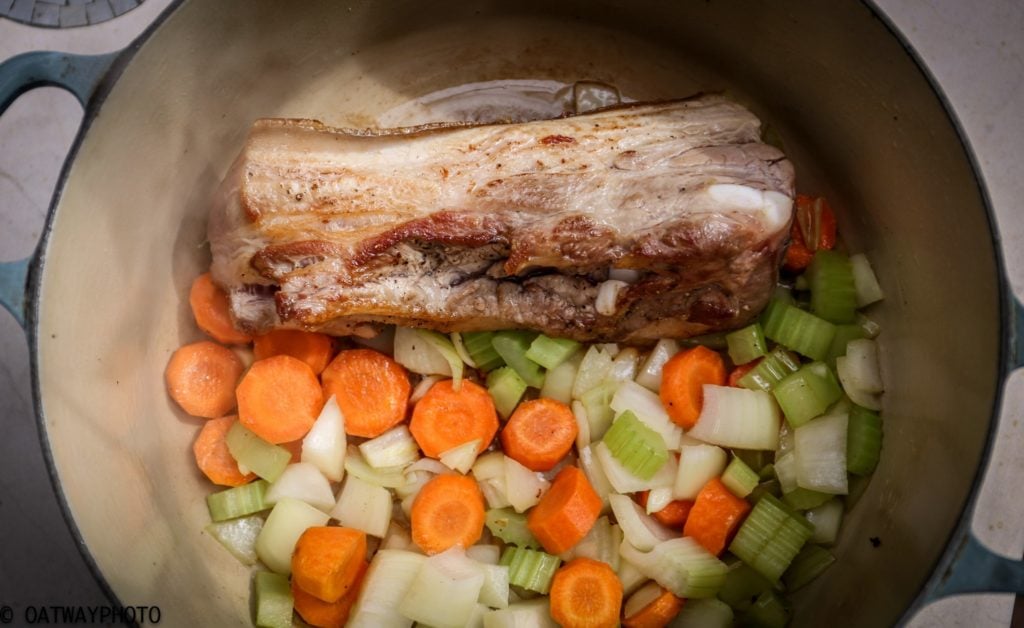
Step 5
Paul took over the duck, and after pouring it with its fat into a frying pan, he fried it at medium heat for 15 minutes, turning it halfway through its cooking time.
The duck confit is not very appealing when you first open the tin, but once the fat starts melting and the meat browning the fragrance of the frying meat becomes irresistible. Was that why Paul took over the duck?
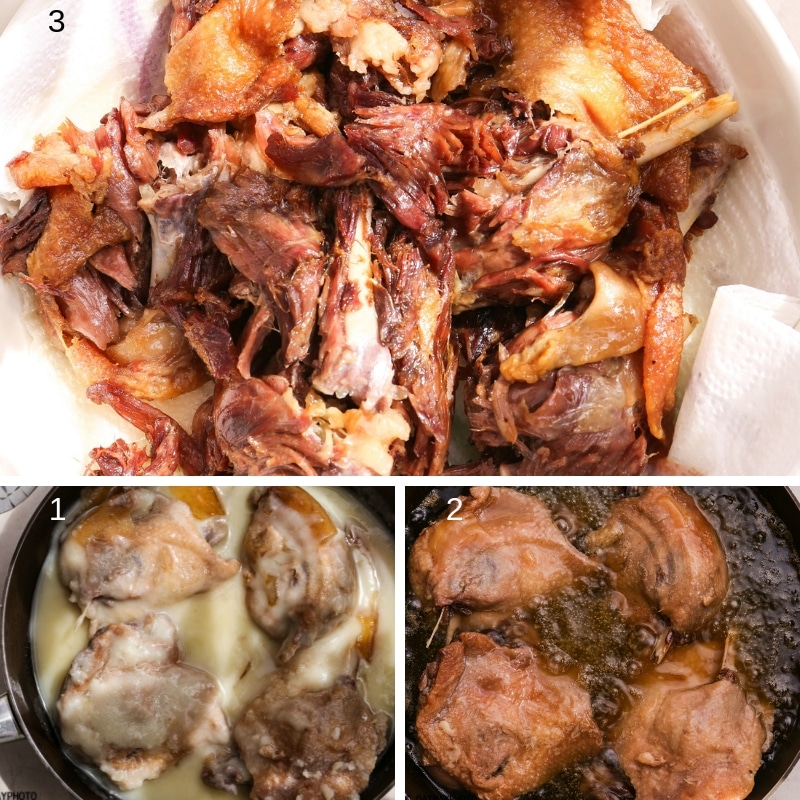
Step 6
Once the duck was ready, Paul took it out of the frying pan and put it over layers of kitchen paper to dry out the fat. As the duck legs cooled down to room temperature, Paul separated the meat discharging skin and bones.
Most of the ingredients were now ready, the beans half cooked and any extra water discharged.
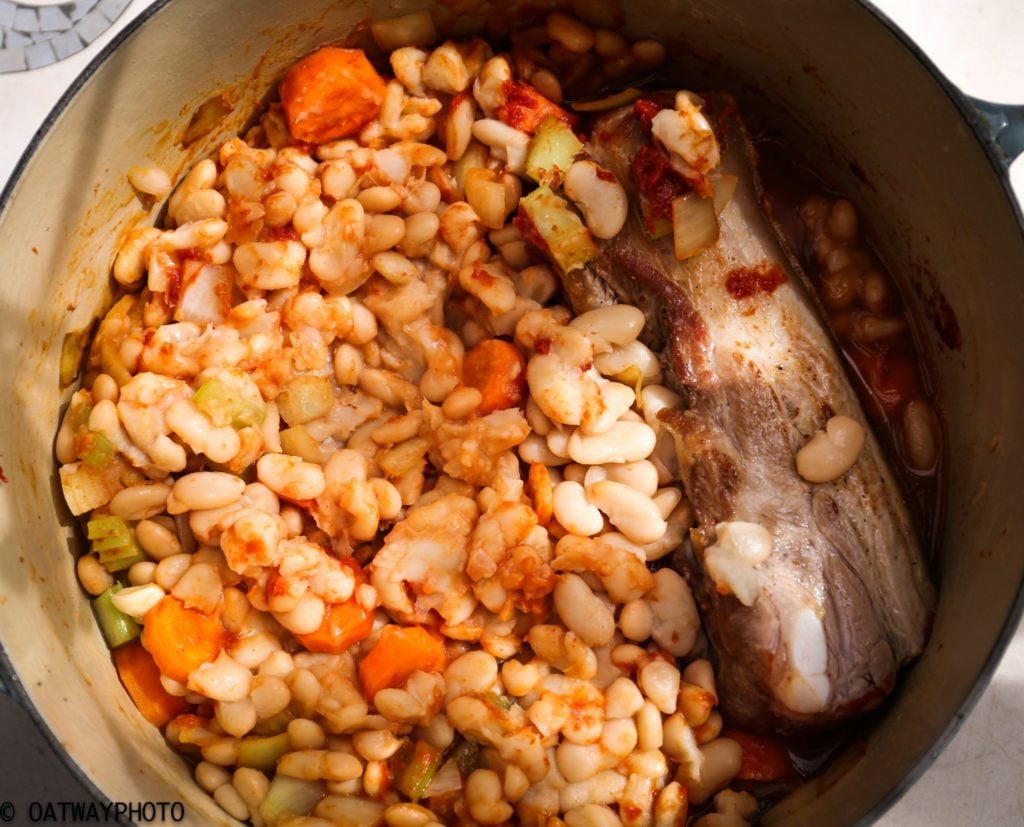
The Challenge
It was getting late and I asked Paul what time he had to leave. That is when I discovered he could not answer because he was chewing on a piece of duck.....
One of the big challenges of making a traditional French Cassoulet is to stop people from eating the meat once all the pieces are pre-cooked. You still have to put beans and meat together and cook it in the oven to finish the dish. Not obvious!
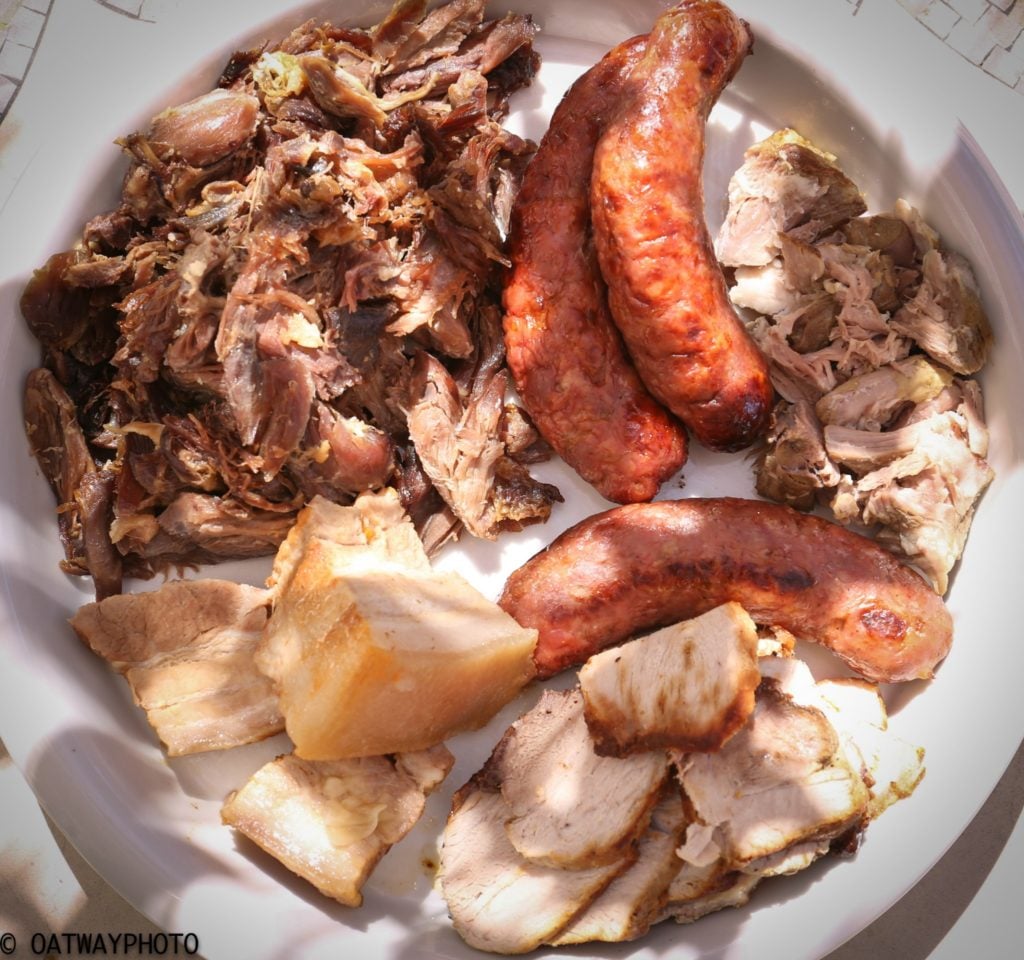
Unfortunately, as soon as the scent of roasted meat filled the house, even my husband and sons came into the kitchen searching for the origin of that delicious aroma.
I quickly hid the remaining duck, sausages and meat. All the ingredients were ready, but the Cassoulet still needed to cook in the oven for another 3 hours.
It was too late, hunger was building up!
I had to quickly feed them with something else, and continue the Cassoulet the next day.
Woah! I almost lost the required 30% of meat decreed by the Etats généraux de la gastronomie française.
The Assembly
Day 3
Before Paul arrived the next day, I bought a load of fresh baguettes from one of the nicest bakeries in the area. I had to divert the attention from the roasted meat and the fragrance of fresh bread did the trick. After an abundant breakfast, we proceeded with the assembly of the Cassoulet.
Step 7
I grated the bread crumbs with 3 garlic cloves and plenty of parsley. Then I deglazed the roasting pan where I cooked the pork with some water to make the gravy. Finally, I removed the bouquet grani from the lamb stock and add the vegetables to the beans
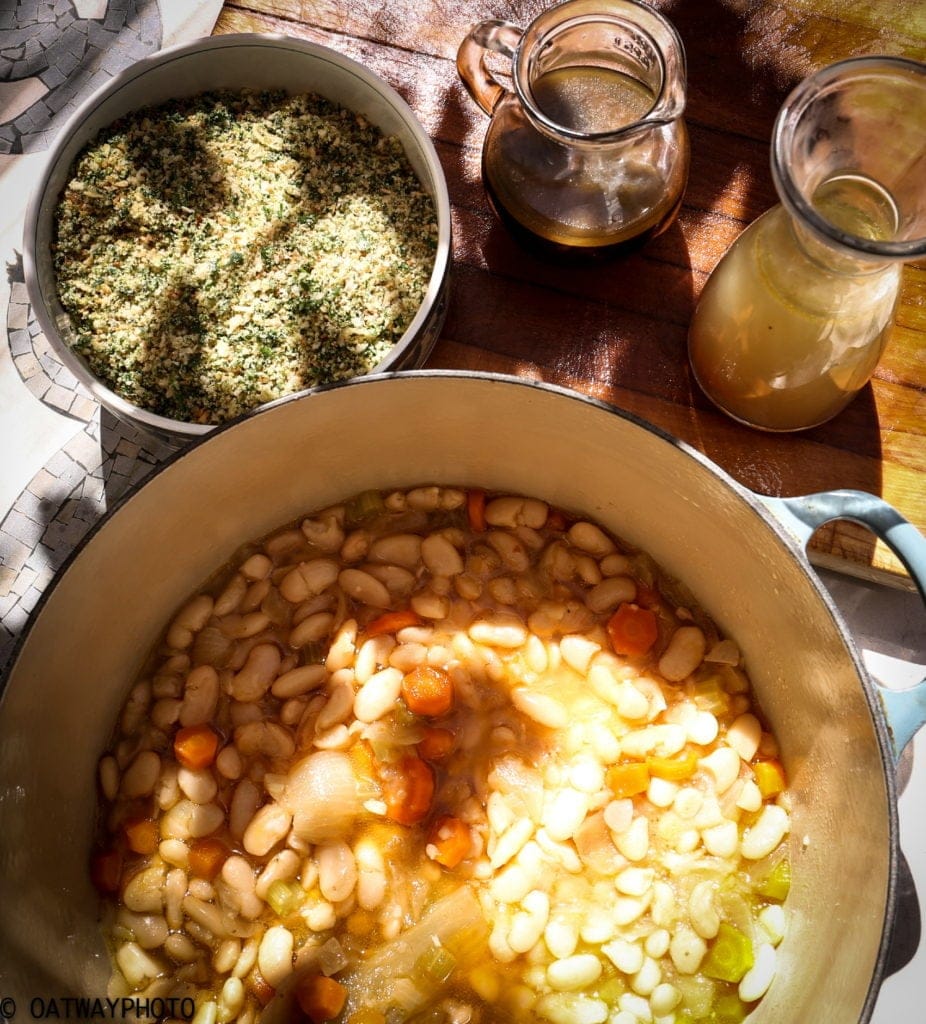
Step 8
Before proceeding, Paul and I tasted all ingredients for salt. Once the Cassoulet is composed it would have been too late to make any adjustments.
All was ok, and our abundant breakfast kept our hunger at bay. We were ready to start.
So after scraping the casserole base with a clove of garlic, I laid the first level of beans.
I then alternated the meat with the beans........
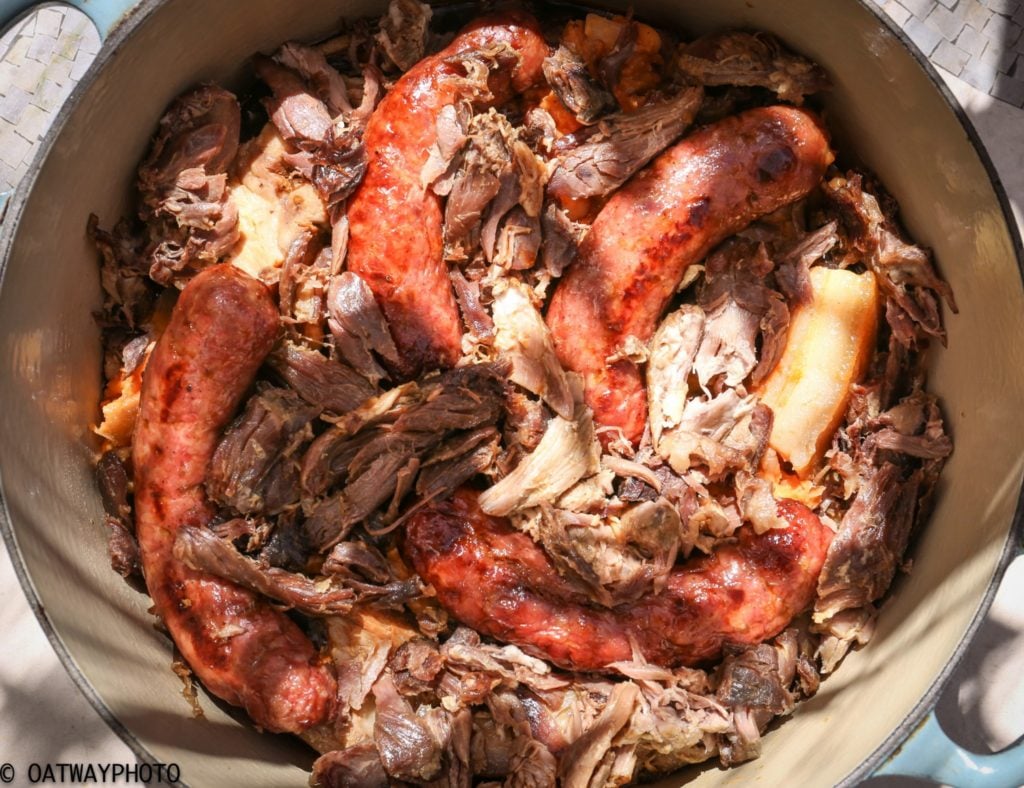
....finishing with beans on the top. I poured the gravy and lamb stock into the pot until the liquid reached the top level, but did not cover it completely. I completed the topping with plenty of breadcrumbs, garlic, parsley and sprinkled with olive oil.
The oven was heated to 355 F - 180 C.
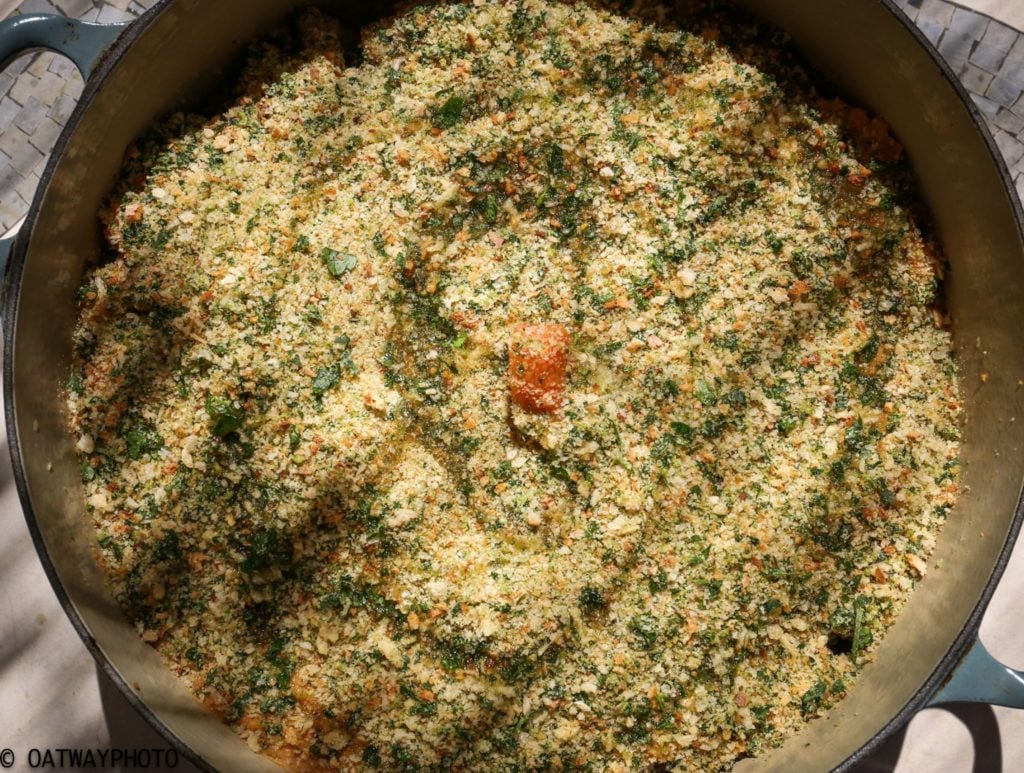
Step 9
The Cassoulet needs to cook in the oven for 3 hours, but every hour it requires some care. After the first hour of cooking,
I took it out of the oven and pushed the breaded crust with a wooden spoon down into the beans and took the opportunity to check if the beans were too dry.
They were, so I added some of the stock. I did the same after 2 hours and after the 3rd hour finally, the Traditional Cassoulet was ready.
What a success!
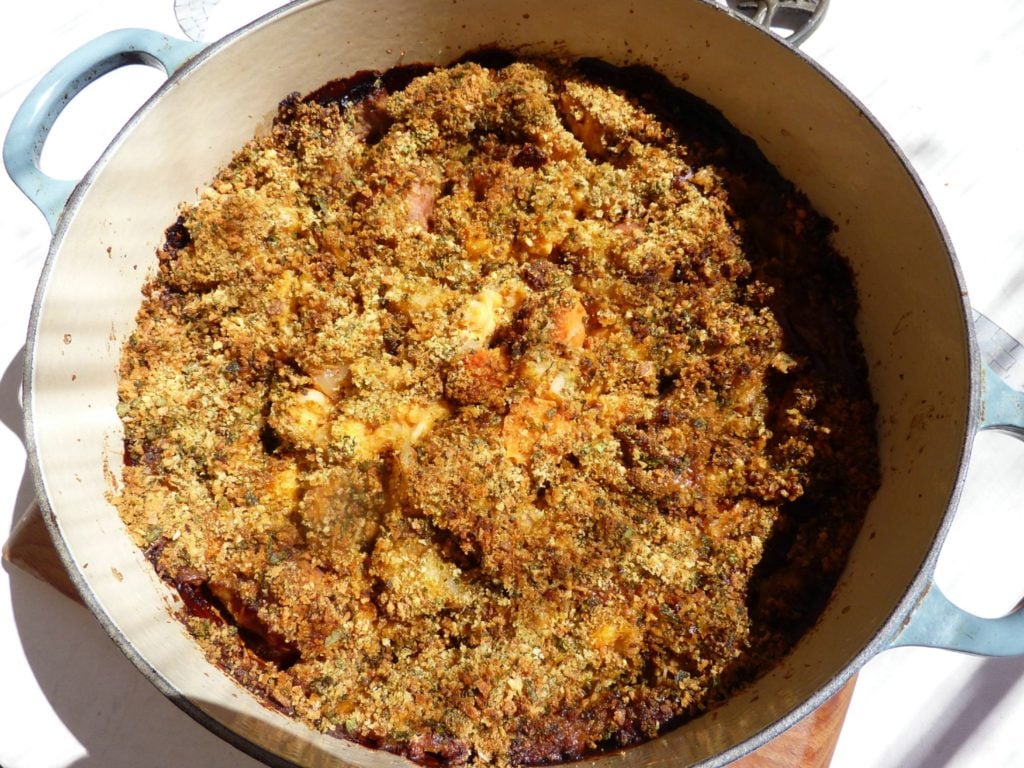
I served it with stir-fried cabbage
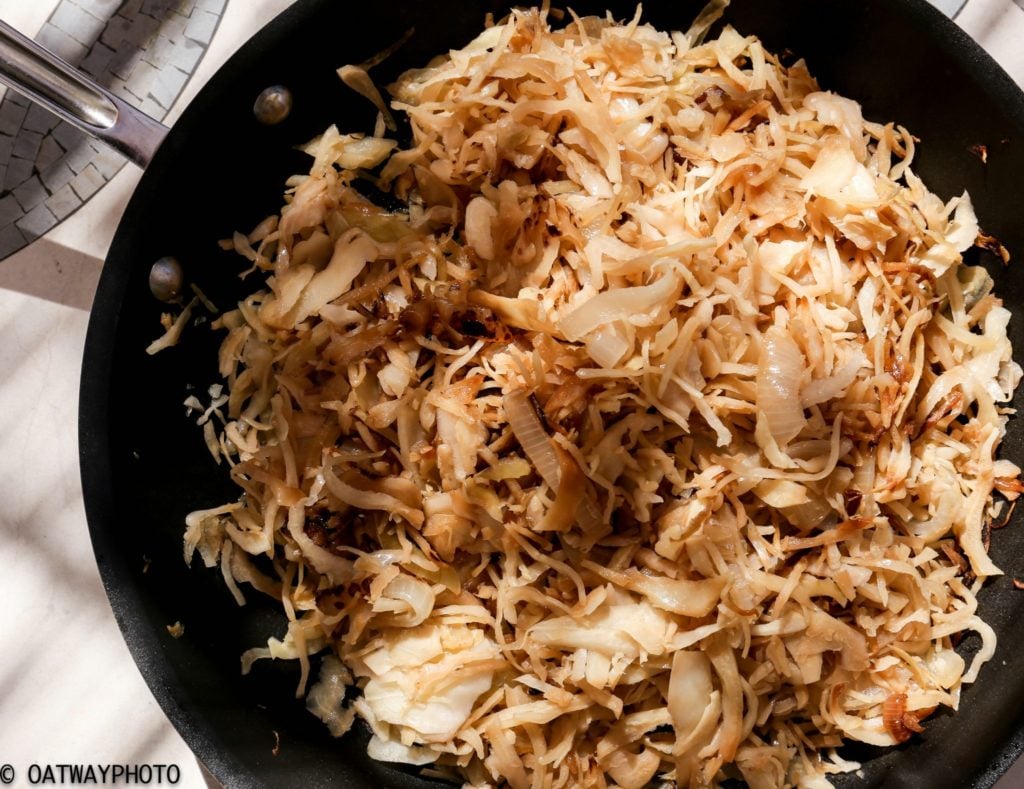
It was a long process, however, the Cassoulet fed a small army!
I served it with shredded cabbage cooked with vinegar, which helped to break the heaviness of the meat.
The Cassoulet is a complete meal rich in proteins, carbs, fibres and vegetables and for the price you pay for the meat, a very successful homemade feast.
So what are the secrets for making a delicious Traditional Cassoulet?
Definitely, buy the right beans and cuts of meat, make sure the beans absorb all the flavours, use plenty of garlic...and a lot of patience!
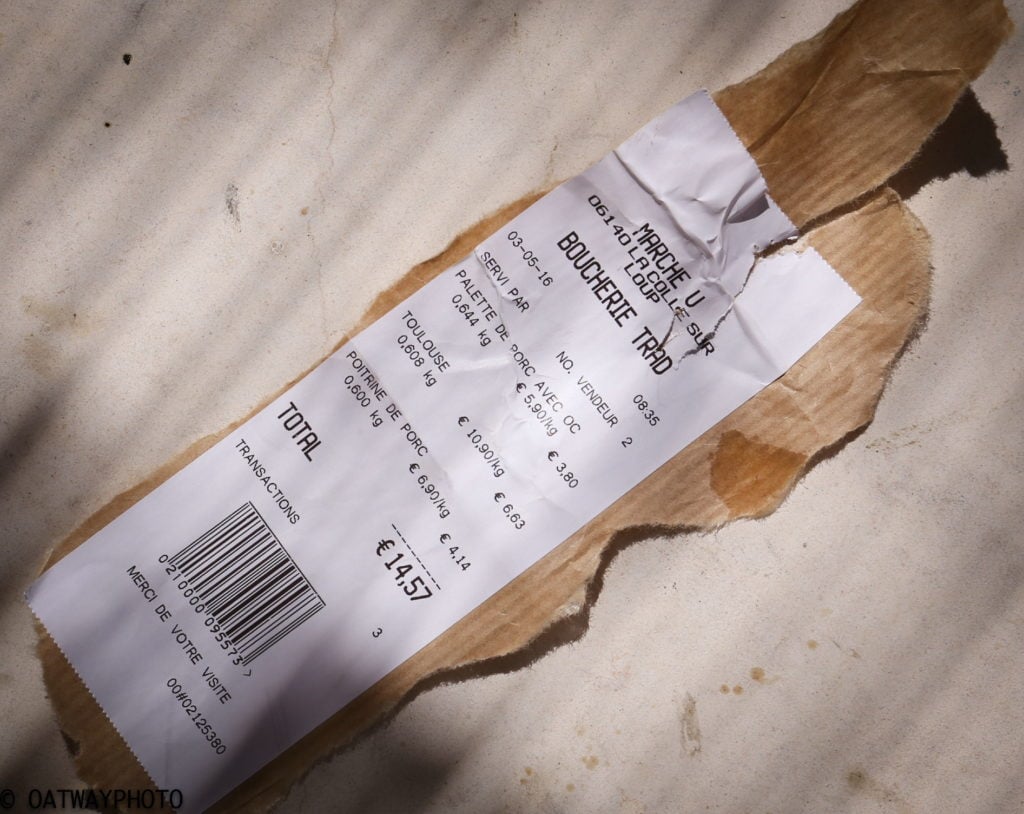
Found out more about pork cuts and how to cook them
To find out more about pork cuts, their name in French and Italian and how to cook them you can read the article: Pork Cuts Names And How to Cook Them
More recipes with pork
- Pulled Pork Pressure Cooker
- Pork Casserole with Pineapple or whatever
- Porchetta Romana Recipe
- Stuffed Pork Tenderloin with Chestnuts and Cranberries
- Wild Boar with Chocolate Sauce
- Homemade Roast Beef
If you are making the Traditional Cassoulet, leave your comment below I would like to hear from you. You can find more delicious ideas if you FOLLOW ME on Facebook, YouTube, Pinterest and Instagram or sign up to my newsletter.
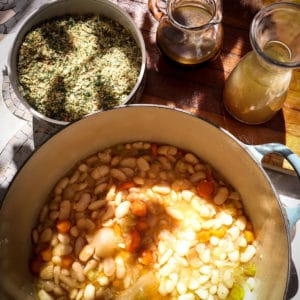
Traditional Cassoulet Recipe
Ingredients
Meat
- 21 oz pork shoulder roast on the bone in French: palette de porc
- 21 oz pork belly in French: poitrine de porc
- 4 Toulouse sausages equivalent of 600 gr
- 1 tin preserved duck legs in French: confit de canard
- 2 cuts lamb shoulder with bone (my personal inspiration)
Vegetables and Herbs
- 26 oz Haricot Tarbais (any other type of white bean is not “traditional”)
- 2 onion
- 1 stalk of celery
- 2 carrots
- 1 garlic head
- 1 sprig fresh parsley
- 7 oz breadcrumbs
- 1 leek
- 1 small tin concentrated tomato paste
- 2 bay leave
- 1 sprig thyme
- duck fat or olive oil
- salt & pepper
Equipment
Instructions
The day before
- To cook a Cassoulet you need to plan a day ahead of time, as the beans need to soak in water overnight.
The meat
- First, all meats should be cooked separately. Start by searing the pork shoulder with olive oil, salt and pepper and cook it in a hot oven (200 C) for 30 minutes (you will use this pan to make gravy). At the same time, but in a separate pan, cook the Toulouse sausages.
- Open the tin of confit de canard and pour it with its fat into a frying pan.
- Fry it at medium heat for 15 minutes, turning it half way during its cooking time.
- Once the duck is ready, place it over layers of kitchen paper to dry out the fat. As it cools down to room temperature, separate the meat discharging skin and bones.
Vegetable and beans
- Chop all the vegetables and prepared 2 bouquet garni, using a leek leaf wrapped around a laurel leaf and some thyme.
- In one pot sear the two pieces of lamb and stir fry some of the vegetables with olive oil. Then add the beans, 2 lt of water, 1 bouquet grani, 1 tablespoon of salt and 4 pepper grains to make a stock. Let it boil for 1 hour.
- In a casserole sear the pork belly, stir fry the rest of the vegetables and deglaze with the tomato paste. Cover with water and add 4 garlic cloves, 1 tablespoon of salt, 4 pepper grains and the second bouquet grani. Cook it for 45 minutes.
Assembly
- Most of the ingredients are now ready, the beans should be half cooked and any extra water should be discharged.
- Cut all the pre-cooked meat into chunks.
- Grate the bread crumbs with 3 garlic cloves and plenty of parsley.
- Deglaze the roasting pan where you cooked the pork with some water to make the gravy.
- Removed the bouquet grani from the lamb stock and add the vegetables to the beans.
- Heat the oven at 180 C.
- Rub the casserole base with a clove of garlic, and laid the first level of beans.
- Alternated the meat with the beans finishing with beans on the top. Pour the gravy and lamb stock into the pot until the liquid reaches the top level, but do not cover it completely.
- Completed the topping with the flavoured breadcrumbs and sprinkled with olive oil.
- The Cassoulet needs to cook in the oven for 3 hours, but every hour it requires some attention. After the first hour of cooking, take it out of the oven and push the breaded crust with a wooden spoon down into the beans. Take this opportunity to check if the beans are too dry, and if they are, add some of the stock. Do the same after 2 hours ....
- ....and after the 3rd hour the Traditional Cassoulet is finally ready to enjoy.
Notes
- Buy the right beans
- Make sure you have plenty of time
- Pre-cook all the meat before
- Check for salt before you assemble it
- Cook for 3 more hours checking every hour if the beans are too dry
- Use plenty of garlic
Nutrition
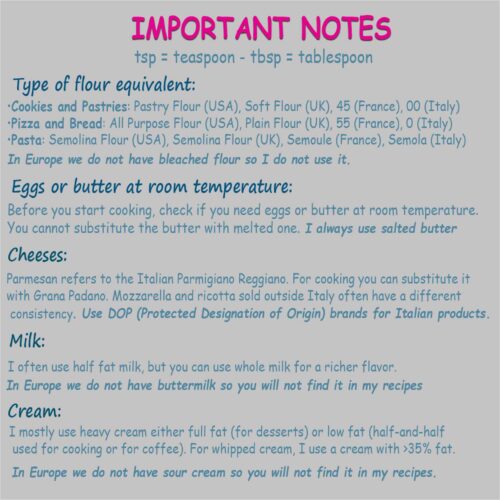

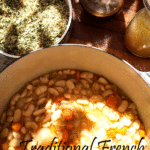
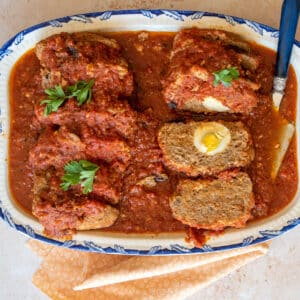
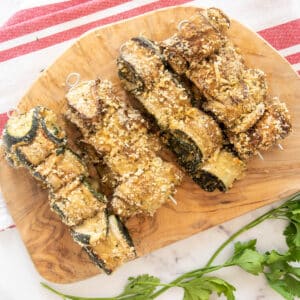

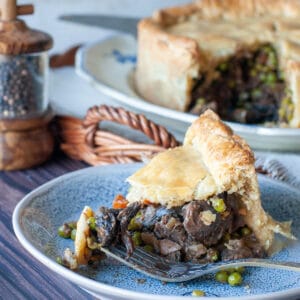
Donna D'Urso
Sounds and looks delicious; but then again everything I ever had that you prepared was! This is definitely a labor of love. May try making this the next time I have a dinner party.
Sara | Belly Rumbles
Thank you for sharing the story of the different cassoulets, I'm glad you went with the traditional cassoulet. Cassoulet is such a great dish during winter, hearty, full of flavour and warms you right up.
Jillian
This looks amazing!
Linda @ With A Blast
This looks absolutely scrumptious !
Kavey Favelle
Great to learn more about the history of cassoulet, I'd never thought about that before, and I also liked learning about the variations. Step by step photos for the instructions are such a boon, makes it to much clearer, thank you!
Emily
I loved reading this post, I can just imagine the 30 minute discussion over the right type of meat to use haha it sounds very much like Italy. The recipe sounds so delicious!
Mike.
Look out ! LAUREL leaves are poisonous as the contain prussic acid, so presumably the laurel in the above recipe means Laurelis nobilis which is the BAY leaf. Live long and prosper. Otherwise good.
Laura
Thank you, Laurel is the French/Italian name. I have amended
Terry
I hope it meant a bay leaf as Laurel is a poison
Laura
Yes, I changed it on the text but must have missed some
thierry tenier
your doctor should spend some more time in France and check that people from South West eating duck fat are the ones with less cholesterol. The duck fat is the animal far best accepted by our organisms. More so, using olive oil in a cassoulet right a sacrilege. Only duck or pork fat accepted. I also encourage you to try with adding some andouillette de troye, preferably AAAAA (5A) that stands for high quality level. It brings a delicious flavor and in this case please no lamb.
Laura
Thierry, thank you for your comment, you made my day! My doctor is French, Dr Galin in Vence PACA region. I will be delighted to give her this news and eat as much duck and foie gras as I can. Next time I make it I will use duck fat and try the andouillette.
Jan Dechamps
Is it just me, or is the first time the beans are mentioned is in the Assembly when it says "the beans should be half cooked"? How and when should they be cooked please? Hope someone is on line as I am making it at the moment! I researched dozens of recipes and this is the one I liked the sound of the most so am making for a dinner party tonight. Thanks in advance.
Laura
Hi Jan, thank you for your question. The beans are added in step 4. I specified it in the text and the recipe card. Hope it is not too late